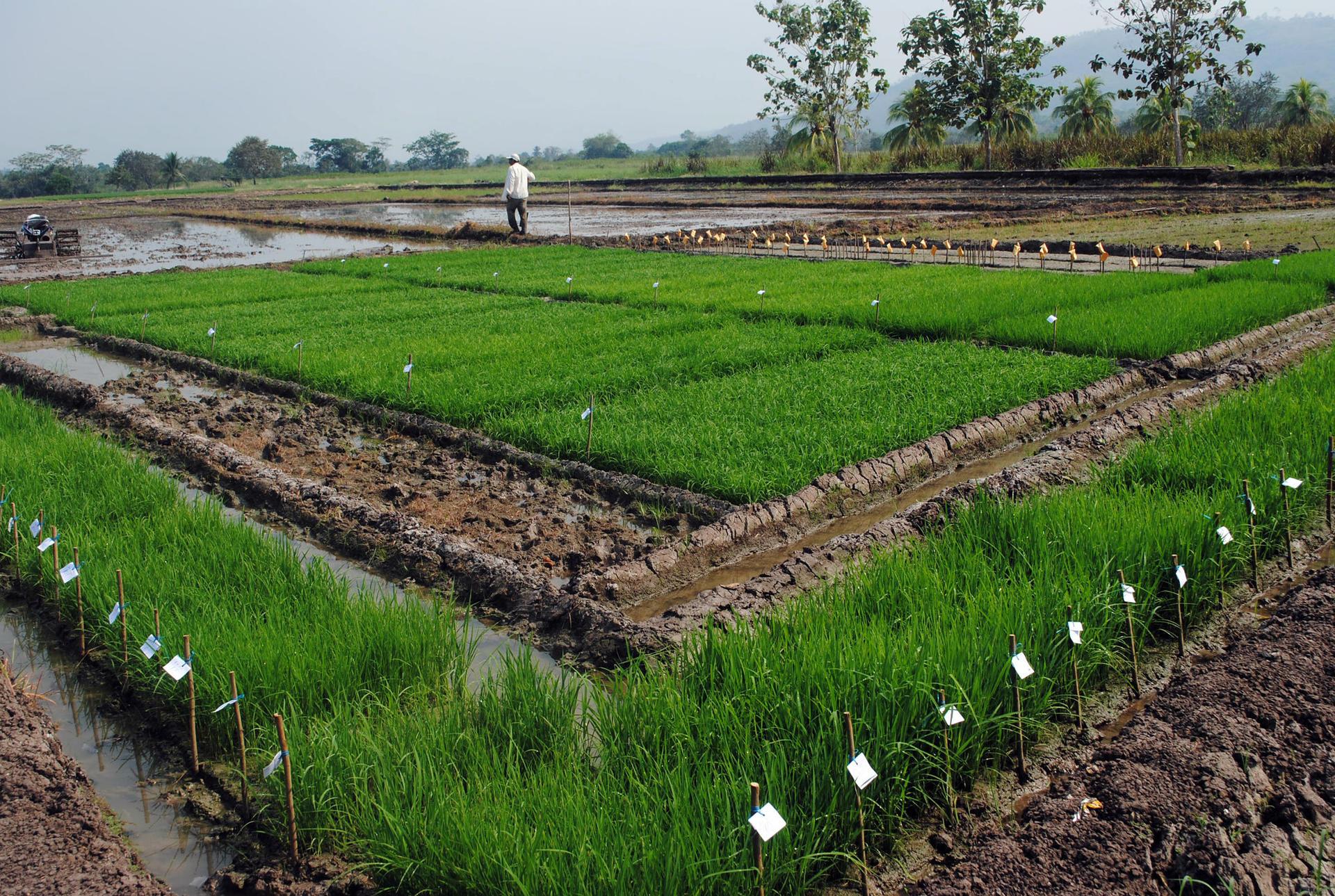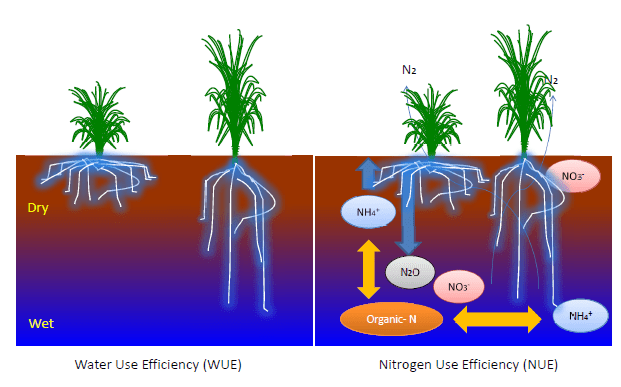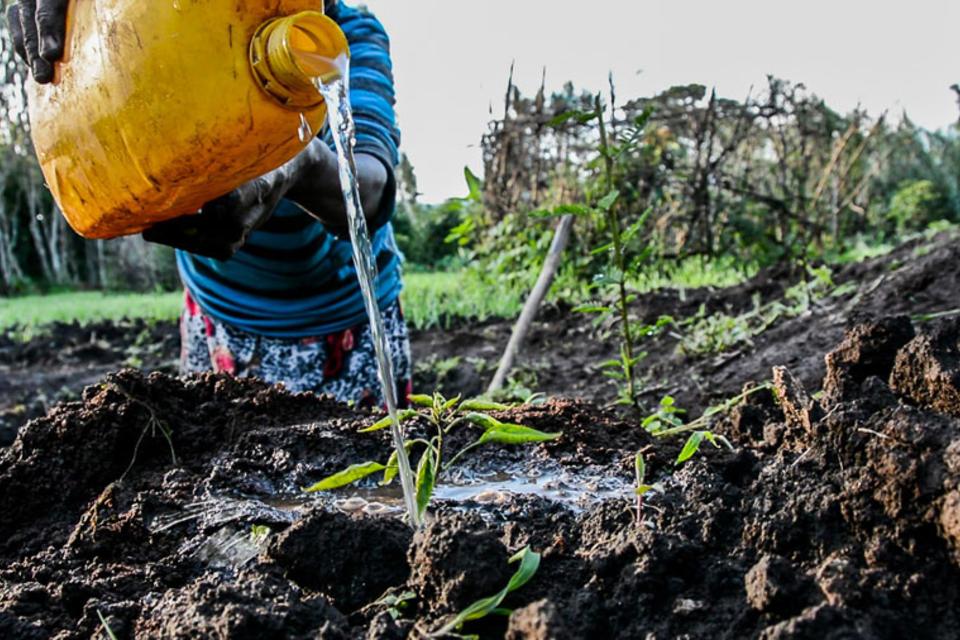Research Articles How Can AI and Deeper Roots Help Soil to Store more Carbon?

By: Andrew Wight, Angela Fernando and Michael Selvaraj
In a new paper, researchers from the Alliance of Bioversity International and CIAT have outlined how deeper roots, artificial intelligence (AI) and remote sensing can help measure and increase soil carbon sequestration.
In 2020, global agricultural emissions were equivalent to 16 billion tonnes of carbon dioxide (an increase of 9% since the year 2000), and globally, the 2020 farm gate emission represented nearly half of total agricultural emissions, according to the Food and Agriculture Organization of the United Nations (FAO).
In Going deep: Roots, carbon, and analyzing subsoil carbon dynamics - published in the international journal Molecular Plant - the authors (led by Angela Fernando from the Alliance of Bioversity International and CIAT) explained how improving soil carbon is a way for farmers to increase food production, achieve global net-zero carbon emissions, and address the impacts of climate change.
“The aim of the article was to summarize all the methods and ideas in one place, so that experts in the field would be able to make the most of them,” says Fernando.

Ideal Root Type in Rice Credit: Satoshi Ogawa
Benefits of Deeper Roots
Fernando explains that mainstream deep tillage (which breaks up the soil prior to planting) and the decomposition of shallow roots causes soil carbon to re-enter the atmosphere. Therefore, deeper-rooting varieties and an understanding of the mechanisms behind different crop varieties are needed.
Fernando says that soil organic carbon is “like a cushion hidden in the soil” and that if a plant's roots are able to reach approximately two meters down, they are much less vulnerable to decomposition by microbes and can serve as reservoirs for nutrients and water when drought conditions arise.
The majority of current crop and forage varieties spread their roots out, but thanks to the discovery of the DRO1 gene that controls root angle, it is now possible to develop varieties of crops and forages (livestock feed) that send their roots down to a depth of one meter.
“There's no new biomass, the roots are just tilted so that they are now growing straight down into the soil where they are not going to decompose, and that means that soil carbon remains trapped down there,” Fernando says.
Joe Tohme, Director of the Alliance’s Hub for the Americas, said that the discovery of DRO1 in 2013 was a “significant breakthrough” in research to adapt food crops to water stress, as deeper roots have access to subsoil water sources.
Measuring Carbon
The researchers explain that one of the hardest challenges in soil carbon sequestration is the task of measuring it.
Michael Gomez Selvaraj - Digital Agriculture Scientist at the Alliance and co-author of the paper - explains that samples are still taken one by one as soil cores and then tested in a lab, but a combination of remote sensing and AI analysis is now changing this.
“If you are surveying 400 hectares, 40 samples will not be a true representation of the soil carbon,” Gomez says, “Also, most people who are measuring carbon are doing it to a depth of only about 40 centimeters.”
Gomez explained that improvements in measuring carbon via remote sensing and then applying AI analysis will allow soil carbon to be quickly and accurately measured at the hectare scale.
“We have very good accuracy with the lab samples and remote samples and we now have a good AI model for calculating soil carbon,” Gomez says, “We are applying it to scan huge pieces of land for its organic carbon, and our hope is that in the future we go even deeper, to one meter below the ground.”
“We don't want to disrupt the soil,” Fernando adds, “We want to use non-destructive remote sensing tools.”
The Future
The researchers explain that if soil carbon can be measured more quickly and accurately and across a large area, then it'd be easier for soil carbon to be assessed and for farmers to participate in carbon markets.
“To get a carbon certificate, you need to have accuracy, so we are working in a public-private partnership to develop a methodology to measure soil carbon that can pay off for the farmers,” says Gomez.
In terms of plant breeding, the hope is that new deep-rooted varieties of rice and forages can increase sequestration of carbon in the soil.
“In the future, gene-editing technologies (such as CRISPR) hold promise for the creation of crop varieties suited for efficient resource capture and carbon sequestration,” says Fernando.



